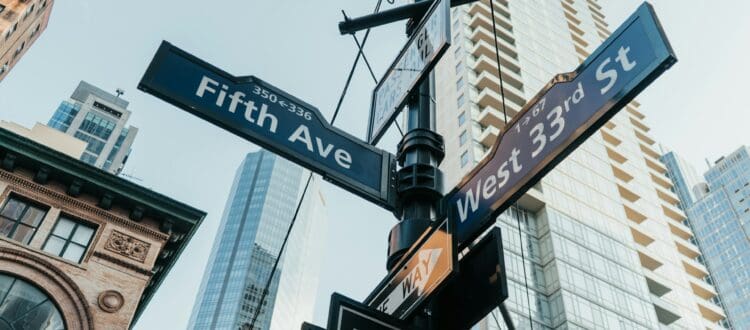Custom street signs offer a unique way to personalize and enhance the character of any street or neighborhood. Whether it’s a residential area, business district, or a special event, custom street signs provide an opportunity to add a personal touch to public spaces.
These signs can be customized with specific names, logos, or messages, allowing for a tailored and distinctive look that reflects the identity and spirit of the community. From decorative purposes to practical applications, custom street signs serve as a creative and functional way to make a statement and leave a lasting impression.
What Material are Custom Street Signs Made of?
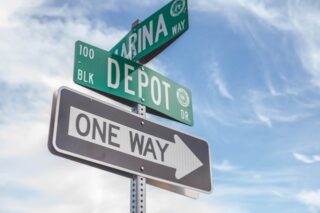 Custom street signs are made from 5052 grade aluminum, the same grade as specified by the FHWA’s MUTCD. Aluminum is the popular choice due to its durability, light weight, and resistance to rust and corrosion, making it ideal for outdoor use. Engineer Grade Retro-Reflective vinyl is used for sheeting the signs, as well as for the lettering on the street signs, ensuring high visibility at night or in low-light conditions.
Custom street signs are made from 5052 grade aluminum, the same grade as specified by the FHWA’s MUTCD. Aluminum is the popular choice due to its durability, light weight, and resistance to rust and corrosion, making it ideal for outdoor use. Engineer Grade Retro-Reflective vinyl is used for sheeting the signs, as well as for the lettering on the street signs, ensuring high visibility at night or in low-light conditions.
For a more traditional and classic look, custom street signs can also be crafted from wood, adding a charming and rustic aesthetic to the streetscape. Also, some modern street signs are made from recycled materials, aligning with sustainability initiatives and promoting eco-friendly practices. The choice of material ultimately depends on the desired style, longevity, and environmental considerations of the specific location or community.
Printed, Cast Bronze, and Wood/HDU Street Signs
Printed street signs and cast street signs each have their own distinct characteristics and applications. Printed street signs are typically made using a process that involves digitally printing or screen-printing the lettering/numbering onto the sheeted aluminum. This method allows for intricate and colorful designs, making it ideal for custom or decorative signs on private drives or vacation rentals, etc.
Cast bronze signs are sometimes used for their sturdiness and longevity. While printed signs offer flexibility in design and are more cost-effective for smaller quantities, cast signs may be preferred for their strength and permanence, making them suitable for long-term use in public spaces. The choice between printed and cast street signs ultimately depends on the specific requirements and intended use of the signage. Most municipalities just stick to the basic sheeted .080in. thickness aluminum with engineer grade vinyl for both background and lettering/numbering.
Lastly, we have a few clients who have specified sandblasted wood or HDU street signs. These signs are technically not MUTCD approved, so can only be used in private neighborhoods that are usually in Home Owner Associations gated communities. They are painted with a high-quality urethane paint that lasts 8-10 years before needing refreshed. They are also very pricey, so these are not used by most HOA’s due to their cost.
Flat Blade Vs Extruded Street Signs
Flat blade street signs and extruded street signs represent two distinct approaches to signage design and production. Flat blade signs are typically created by cutting a flat sheet of metal, such as aluminum, into the desired shape and size. This method results in signs with a sleek and minimalist appearance, making them well-suited for modern and contemporary environments.
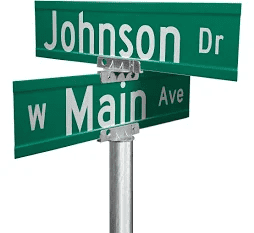 On the other hand, extruded street signs are formed by pushing aluminum through a die to create a three-dimensional shape, which use an extrusion process to save on aluminum used but keep the signs strong. The choice between flat blade and extruded street signs depends on the desired aesthetic, as well as the specific functional and visual requirements of the signage project. The cost is relatively similar. These signs are often background painted and EG Reflective lettered/numbered.
On the other hand, extruded street signs are formed by pushing aluminum through a die to create a three-dimensional shape, which use an extrusion process to save on aluminum used but keep the signs strong. The choice between flat blade and extruded street signs depends on the desired aesthetic, as well as the specific functional and visual requirements of the signage project. The cost is relatively similar. These signs are often background painted and EG Reflective lettered/numbered.
When it comes to installation and maintenance, flat blade street signs offer simplicity and ease of handling – about the same as extruded street signs. Both of these signs may be mounted onto existing sign posts with existing hardware requiring minimal effort, making them a convenient choice for either type of sign, as long as the mounting brackets match the sign types – extruded or blade. Extruded street signs, with their three-dimensional structure, may require mounting hardware that is slightly different than for blade signs, though installation techniques will be similar to blade signs. The decision between flat blade and extruded street signs should take into account factors such as pre-existing hardware, installation requirements, and maintenance considerations.
How are Custom Street Signs Regulated?
They are regulated by local and municipal authorities to ensure that they adhere to specific standards and guidelines. These regulations often cover aspects such as the size, color, and placement of custom street signs to maintain consistency and visibility within a community. Also, regulations may dictate the materials and reflective properties required for custom street signs to ensure readability and safety, especially at night or in adverse weather conditions.
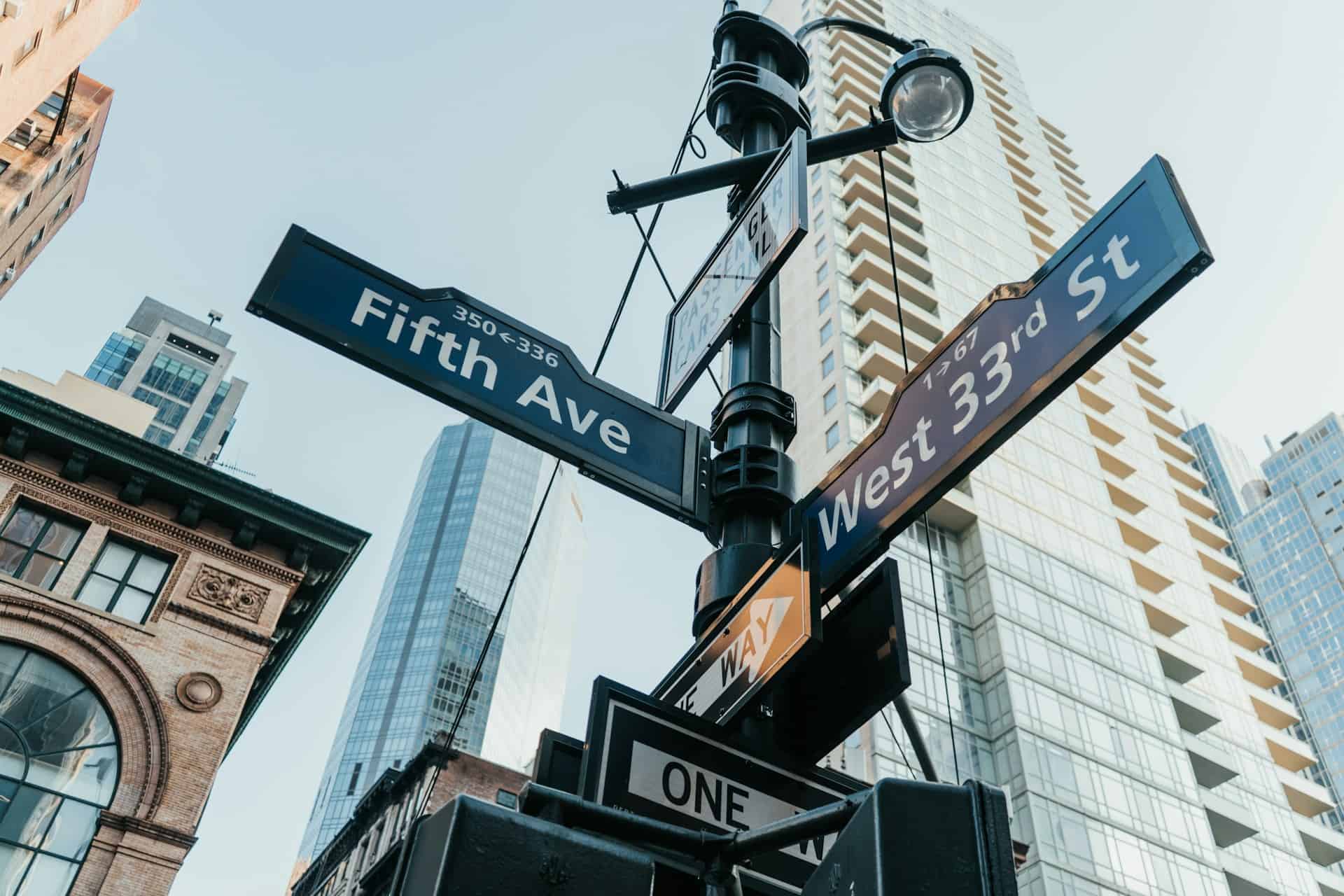 Compliance with zoning and aesthetic requirements may also be enforced to preserve the overall visual harmony and character of the area. By regulating custom street signs, authorities aim to create a cohesive and functional streetscape while allowing for personalization within established parameters. Note that “custom street signs” for this usage are approved by the MUTCD, but in private HOA’s, sometimes the municipality will allow for approved variations, as long as they’re of superior quality and maintained as needed.
Compliance with zoning and aesthetic requirements may also be enforced to preserve the overall visual harmony and character of the area. By regulating custom street signs, authorities aim to create a cohesive and functional streetscape while allowing for personalization within established parameters. Note that “custom street signs” for this usage are approved by the MUTCD, but in private HOA’s, sometimes the municipality will allow for approved variations, as long as they’re of superior quality and maintained as needed.
The process for obtaining approval for custom street signs often involves submitting design proposals and specifications to the relevant local street department authorities for review. This may include obtaining permits or licenses to install custom street signs in public spaces, ensuring that they meet safety and quality standards. In some cases, community input and consensus may also play a role in the approval process for custom street signs, fostering a sense of ownership and collaboration among residents and local stakeholders.
Do Custom Street Signs Need to be MUTCD-Compliant?
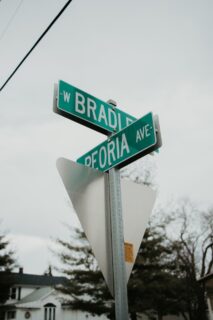 They are often required to be MUTCD (Manual on Uniform Traffic Control Devices) compliant, especially if they are intended for use in public roadways or areas subject to traffic regulations. The MUTCD sets national standards for traffic control devices, including street signs, to ensure consistency, visibility, and safety on the road.
They are often required to be MUTCD (Manual on Uniform Traffic Control Devices) compliant, especially if they are intended for use in public roadways or areas subject to traffic regulations. The MUTCD sets national standards for traffic control devices, including street signs, to ensure consistency, visibility, and safety on the road.
While custom street signs allow for personalization and creativity, they must still adhere to the guidelines outlined in the MUTCD to ensure that they are legible, recognizable, and effectively convey important information to drivers and pedestrians. Compliance with MUTCD standards may involve factors such as the size, shape, color, lettering style, and reflectivity of custom street signs, all of which contribute to their effectiveness as traffic control devices.
Furthermore, the MUTCD compliance of custom street signs is crucial for maintaining the legal and regulatory integrity of public roadways. By adhering to MUTCD standards, custom street signs contribute to the overall consistency and uniformity of traffic control devices, promoting safe and efficient navigation for road users. Custom street sign manufacturers and designers must consider MUTCD requirements when creating personalized signage for public spaces, ensuring that their designs align with established standards and contribute to the overall functionality and safety of the transportation infrastructure.
Is there a Copyright on Street Signs?
Street signs, as functional and informational elements of public infrastructure, are not subject to copyright protection. The primary purpose of street signs is to convey essential information, such as traffic regulations, directions, and warnings, to the public. As such, the content and design of standard street signs are considered to be in the public domain, allowing for widespread use and replication without the need for permission or licensing. However, in the context of custom or decorative street signs that feature unique designs or artwork, there may be instances where the visual elements are protected by copyright. In these cases, the specific artistic or graphic elements of the custom street sign may be subject to copyright, requiring permission for reproduction or use by others.
Moreover, the standardization and uniformity of street signs, as regulated by traffic control authorities and governmental agencies, contribute to the general understanding that their content and design are intended for public use and accessibility. This approach ensures that essential information displayed on street signs remains widely available and recognizable without legal restrictions, aligning with the broader public interest in safety and navigational clarity.
How Big Should Your Custom Street Sign Be?
The size of a custom street sign should be determined by its intended purpose, location, and the specific regulations governing signage in the area. Examples of size are typically governed by the length of the street name. The height for blade signs is typically six inches by length of the copy plus a couple inches on each side. Also, street signs located on highways or busy intersections may need to be larger to ensure visibility from a distance and at higher speeds, while signs in residential areas or pedestrian zones may be smaller but still easily readable. Also, local regulations or guidelines from municipal authorities may specify the minimum and maximum dimensions for custom street signs to ensure consistency and compliance with safety standards.
Can Custom Street Signs be of Any Color?
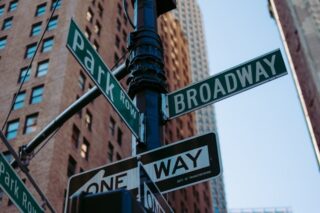 They may often be produced in a variety of colors to suit specific preferences, branding, or thematic considerations. While standard street signs typically adhere to specific color conventions for consistency and universal recognition, custom street signs may offer a broader range of color options for personalization and aesthetic appeal. However, it’s important to consider the visibility and legibility of the chosen colors, especially in relation to the background against which the sign will be displayed.
They may often be produced in a variety of colors to suit specific preferences, branding, or thematic considerations. While standard street signs typically adhere to specific color conventions for consistency and universal recognition, custom street signs may offer a broader range of color options for personalization and aesthetic appeal. However, it’s important to consider the visibility and legibility of the chosen colors, especially in relation to the background against which the sign will be displayed.
The MUTCD specifies good contrast more than color, although the majority of street signs are green background/white foreground. Other background options include brown, blue, red, black, and yellow. The main requirement beyond this is that the street name/number be strongly contrasting with the background. White would be the typical choice for the 1st four colors listed, and black lettering for the yellow sheeted sign.
Factors such as contrast, reflectivity, and the surrounding environment should be taken into account to ensure that the custom street sign remains easily readable and conspicuous to pedestrians and motorists. Also, local regulations or guidelines may specify acceptable color combinations for custom street signs to ensure compliance with safety and visibility standards, especially in areas subject to traffic control and public safety considerations.
Do Custom Street Signs Need to be Reflective?
They are often required to be reflective, particularly if they are intended for use in low-light conditions or areas with high traffic flow. Reflective street signs enhance visibility and legibility, especially at night or in adverse weather conditions, contributing to improved safety for drivers and pedestrians. By using reflective materials or coatings, custom street signs can effectively reflect light from headlights, street lamps, or other sources, making them more conspicuous and easier to read in low-light environments. Compliance with reflective requirements may be regulated by local authorities or traffic control agencies to ensure that custom street signs meet specific standards for visibility and safety.
How Durable are Custom Street Signs?
They are designed to be durable, capable of withstanding various environmental conditions and external factors. The durability of custom street signs is crucial for ensuring their longevity and continued effectiveness in conveying important information to road users. These signs are mainly constructed using robust materials such as aluminum, which offer resistance to corrosion, rust, and general wear and tear.
Conclusion
Custom street signs play a vital role in enhancing the functionality, safety, and aesthetic appeal of public spaces and roadways. From their design and size to their color and reflective properties they offer a versatile means of conveying essential information while allowing for personalization if desired. The durability of these signs ensures their ability to withstand environmental challenges and maintain their effectiveness over time. Whether serving as navigational aids, traffic control devices, or decorative elements, custom street signs contribute to the visual identity and safety of their surroundings, reflecting a balance between individual expression and public utility.
Popular Posts:

